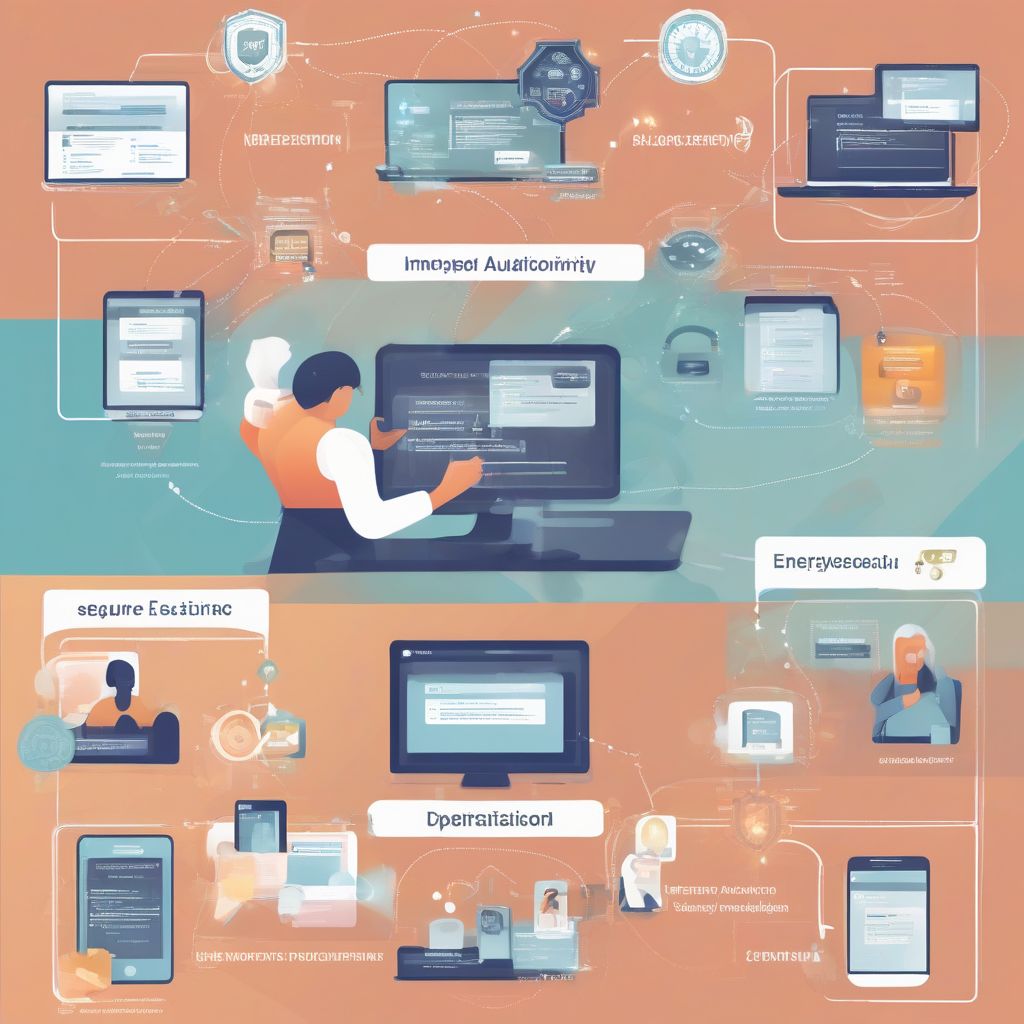Imagine this: you’ve poured your heart and soul into developing an amazing app. It’s sleek, intuitive, and poised to revolutionize the way people connect with the world. But then, disaster strikes. A critical vulnerability is exposed, and malicious actors exploit it, compromising your users’ data and shattering the trust you’ve worked so hard to build.
This nightmare scenario is a harsh reality for many app developers who fail to prioritize secure coding practices from the outset. In today’s digital landscape, where cyber threats are becoming increasingly sophisticated, building security into every line of code is no longer optional – it’s absolutely essential.
This comprehensive guide will delve deep into the world of secure coding, equipping you with the knowledge and tools necessary to fortify your apps against potential attacks and safeguard your users’ valuable information.
Understanding the Importance of Secure Coding
Before we dive into the nitty-gritty of implementing secure coding practices, it’s crucial to grasp why this approach is so vital in today’s interconnected world.
- Protecting User Data: In an era of data breaches and privacy concerns, users entrust apps with a treasure trove of sensitive information. From personal details to financial records, the onus is on app developers to handle this data responsibly and shield it from unauthorized access.
- Preserving App Integrity: Vulnerabilities in code can be exploited to alter app functionality, leading to unpredictable behavior, crashes, or even complete system takeovers. Secure coding practices act as a safeguard, ensuring your app functions as intended and maintains its intended purpose.
- Maintaining Reputation: A single security breach can irreparably damage an app’s reputation, leading to a loss of user trust, negative reviews, and a significant hit to your brand image. Prioritizing secure coding demonstrates your commitment to user safety and fosters long-term trust.
- Compliance with Regulations: With data protection regulations like GDPR and CCPA becoming increasingly stringent, failing to implement adequate security measures can result in hefty fines and legal repercussions.
Key Secure Coding Practices
Now that we understand the “why” let’s explore the “how.” Here are some of the most effective secure coding practices you should adopt throughout the app development lifecycle:
1. Input Validation: Don’t Trust Anything, Verify Everything
One of the most common entry points for attackers is through user input fields. Never assume that users will provide data in the format or type you expect. Always validate and sanitize all inputs to prevent malicious code injection attacks, such as:
- Cross-Site Scripting (XSS): Sanitize user inputs to prevent attackers from injecting malicious scripts that could compromise user accounts or steal data.
- SQL Injection: Utilize parameterized queries or prepared statements when interacting with databases to prevent attackers from manipulating SQL queries to gain unauthorized access.
2. Authentication and Authorization: Building a Secure Entry Point
Think of your app like a fortress. Authentication and authorization act as the gatekeepers, ensuring that only authorized users gain access to specific resources. Implement robust mechanisms for:
- Strong Passwords: Enforce strong password policies that require users to create complex passwords with a mix of uppercase and lowercase letters, numbers, and special characters.
- Multi-Factor Authentication (MFA): Add an extra layer of security by requiring users to provide two or more forms of authentication, such as a password and a one-time code sent to their mobile device.
- Role-Based Access Control (RBAC): Limit user access to specific functionalities and data based on their predefined roles within the app.
3. Data Encryption: Shielding Data in Transit and at Rest
Data is most vulnerable when it’s on the move or stored without adequate protection. Implement encryption to render sensitive data unreadable to unauthorized individuals.
- Data in Transit: Use HTTPS (SSL/TLS) to encrypt data transmitted between the app and the server, preventing eavesdropping and man-in-the-middle attacks.
- Data at Rest: Encrypt sensitive data stored on devices or servers using strong encryption algorithms to protect against data breaches, even if physical access is compromised.
4. Secure Logging and Monitoring: Staying Vigilant
Think of logging and monitoring as your app’s security cameras. Implement robust mechanisms to:
- Log Security Events: Record all security-related events, such as login attempts, failed authentication, and data access requests, to detect and respond to suspicious activities.
- Regular Monitoring: Analyze logs for patterns and anomalies that could indicate an attack in progress or potential vulnerabilities that need to be addressed.
5. Regular Security Testing and Updates: Staying Ahead of the Curve
The cybersecurity landscape is constantly evolving. To stay ahead of emerging threats, make security testing and updates an integral part of your app development process.
- Penetration Testing: Conduct regular penetration tests, where ethical hackers attempt to exploit vulnerabilities in your app, to identify and address weaknesses before malicious actors can exploit them.
- Security Updates: Keep your app’s software, frameworks, and libraries up-to-date to patch known vulnerabilities and benefit from the latest security enhancements.
Conclusion: Building a Secure Future for Your App
Implementing secure coding practices is not a one-time task; it’s an ongoing commitment. By embedding security into every stage of the app development lifecycle, from design to deployment and beyond, you can create robust and resilient apps that safeguard user data, preserve app integrity, and foster enduring trust with your users.
Remember, security is not just about writing code; it’s about building a culture of security within your development team and making it an integral part of your app’s DNA. Embrace the principles outlined in this guide, stay informed about the latest security threats and mitigation techniques, and continue to invest in the tools and resources necessary to create a secure and trustworthy experience for your users.
Now that you’re equipped with the knowledge to build secure apps, we encourage you to share your thoughts and experiences in the comments below. What additional steps do you take to ensure the security of your apps? Let’s continue the conversation and learn from each other!
 Secure Coding Practices
Secure Coding Practices
[amazon bestseller=”secure coding practices”]
